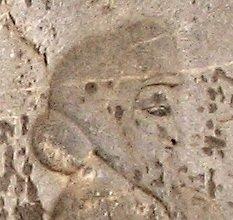Alexandria Eschate
Q2280882Alexandria Eschatê ("the furthest"): town founded by Alexander the Great, modern Khojand.

Of the many cities founded by Alexander the Great, Alexandria Eschatê was probably the one that created most problems. From the very beginning, there were troubles; and this must have surprised Alexander, because the march to the river Jaxartes, in the early summer of 329, had been easy. The last resistance to his rule had vanished after his friend Ptolemy had captured the Persian leader, Bessus.
Now, he wanted to build a city on the bank of the river that was the boundary between Sogdia and the Hunger Steppe, which was inhabited by the Sacae. It was to replace an older city, which is called Kyreschata in the Greek sources, and must render Persian Kuruškatha ('town of Cyrus'). It was to be an important site, because on the one hand it was to be the empire's northernmost military base, and a defense against the Sacan tribesmen, and on the other hand, it could be a base for a return to the west across the plains of the Ukraine. The city also controlled the route to the lush Fergana Valley, where a road across the Pamir Range led to China. Probably, the Macedonians also wanted some rest after a war that had lasted five years.

Alexander was unaware of the subtle balance that in Sogdia existed between the nomads and the town dwellers. In southern Bactria, there were some well-established cities; in Sogdia, towns like Maracanda (Samarkand) and Nautaca coexisted with the nomads; but beyond the Jaxartes, nomads did not appreciate urban life. The Ma Saka (or Massagetes, as the Greeks called them) and Apa Saka (Abian Scythians) felt threatened and sent ambassadors; but the Sogdians near the new town choose not to negotiate and killed some Macedonian soldiers.
Alexander immediately retaliated and destroyed seven settlements in the neighborhood. The populations were deported and put to work, building the new city with a wall of 6 km length. Together with invalid Macedonians and Greek mercenaries, they were to be the new inhabitants of Alexandria. The remains of its walls and a couple of Hellenistic sherds have been found near modern Khodzent, but not much else has been excavated.
After defeating the Saka and a guerilla war, in which Alexander defeated Spitamenes, rest returned to Sogdia, although it was the rest of a graveyard, and new insurrections were to follow soon. Still, the city continued to exist and maintained close ties to the Seleucid Empire and its local successors, the Graeco-Bactrian kingdom and the Parthian Empire.
The city also also was part of the Silk road, which connected China with the Mediterranean. This also meant that the eastern frontier was open to invaders, and it appears that in the second century, Yuezhi nomads invaded Sogdia from Xinjiang. They took over the region, but it seems that the city retained some of its Greek character, if we are to believe the Roman author Curtius Rufus. The city is still mentioned as an important center by the seventh-century Chinese traveler Xuan Zang.
Literature
- Frank Holt, Alexander the Great and Bactria: The Formation of a Greek Frontier in Central Asia (1988)